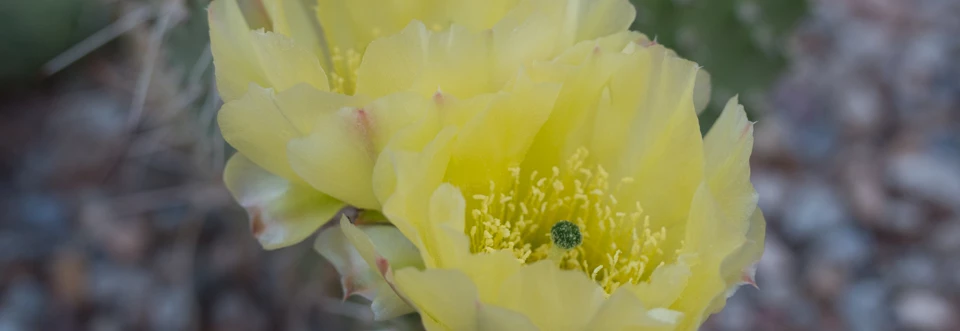
NPS Photo More than most plants, the cactus seems perfectly suited to life in an arid climate. The cactus, especially the saguaro, has become emblematic of the American southwest. Nine species of cactus are found in Arches, though the saguaro is not one of them. (Look them up by color or name on the Wildflowers page.) Cacti are plants that have succulent stems, pads or branches with scales and spines instead of leaves. Cactus pads are actually modified stems with a waxy coating. The prickly spines are modified leaves that break up the evaporative winds blowing across pad surfaces, and help shade the stem. Root systems are usually broad and shallow, and rainwater is soaked up quickly. Small rain roots actually grow as soon as soil is moistened by rain, and later dry up. All plants photosynthesize, collecting carbon dioxide through holes in their leaves called “stomata” and converting it into sugar and oxygen. Cacti utilize CAM photosynthesis, a process unique to succulents. In CAM photosynthesis, stomata open only at night when the plant is relatively cool, so less moisture is lost through transpiration. However, photosynthesis also requires sunlight. The CAM process includes a way of chemically storing the carbon dioxide until the sun comes out, when it can be used to complete the photosynthetic process. Stomata are like windows; they have to be open to let air and water in or out, but sunlight can come in even if they’re closed. Despite their prickly armor, cacti are not immune to predators. Many rodents gnaw on cactus pads, and other mammals, including bears and humans, enjoy the sweet red fruit of the prickly pear. |
Last updated: April 18, 2025
